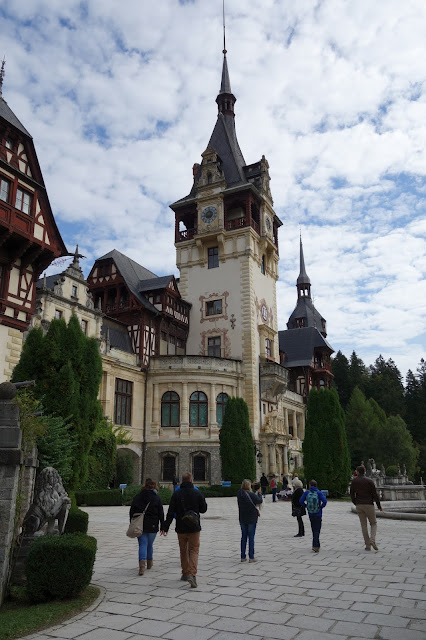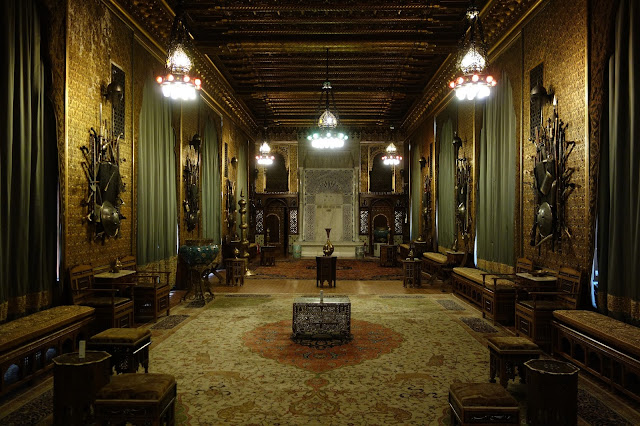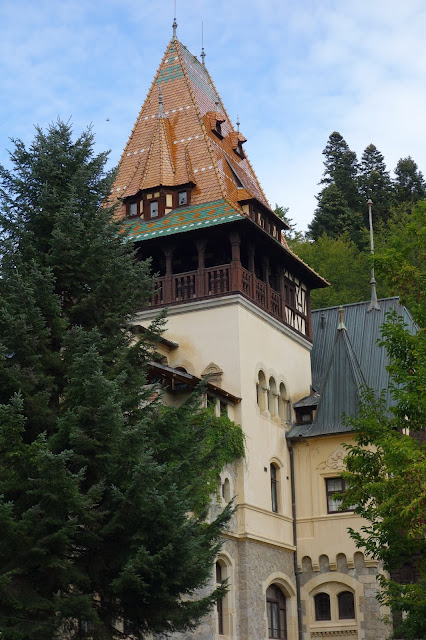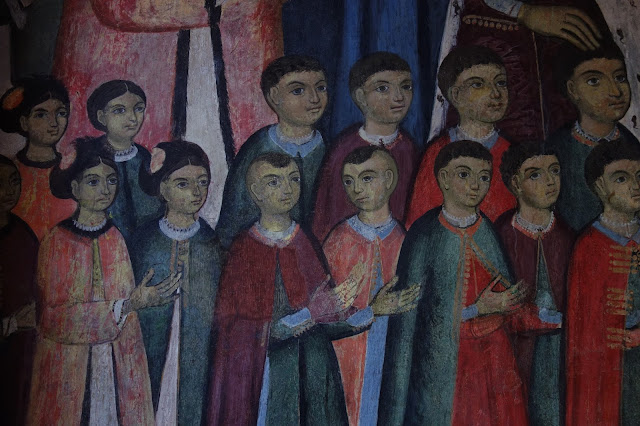Sinaia is about 31 miles south of Brașov, in a mountainous area on the Prahova River valley, just east of the Bucegi Mountains. The altitude varies from 2,516 to 2,822 feet above sea level.
The city is a popular destination for hiking and winter sports, especially downhill skiing. Among the tourist landmarks, the most important are Peleș Castle, Pelișor Castle, and the Sinaia Monastery.
Peleș Castle is a Neo-Renaissance castle in the Carpathian Mountains, near Sinaia, on an existing medieval route linking Transylvania and Wallachia, built between 1873 and 1914. Its inauguration was held in 1883. It was constructed by King Carol I of Romania (1839–1914), under whose reign the country gained its independence. He first visited the site of the future castle in 1866 and fell in love with the magnificent mountain scenery. In 1872, the Crown purchased 500 square miles of land near the Piatra Arsă River. The estate was named the Royal Estate of Sinaia. The King commissioned the construction of a royal hunting preserve and summer retreat on the property, and the foundation was laid for Peleș Castle on 22 August 1873. Several auxiliary buildings were built simultaneously with the castle: the guards' chambers, the Economat Building, the Foişor hunting lodge, the royal stables, and a power plant. Peleș became the world's first castle fully powered by locally produced electricity.
The first three design plans submitted for Peleș were copies of other palaces in Western Europe, and King Carol I rejected them all as lacking originality and being too costly. German architect Johannes Schultz won the project by presenting a more original plan, something that appealed to the King's taste: a grand palatial alpine villa combining different features of classic European styles.
The cost of the work on the castle undertaken between 1875 and 1914 was estimated to be 16,000,000 Romanian lei in gold (approx. US $120 million today). Between three and four hundred men worked on the construction.
After King Michael I's forced abdication in 1947, the Communist regime seized all royal property, including the Peleș Estate. The castle was opened as a tourist attraction for a short time. The castle was declared a museum in 1953. Nicolae Ceauşescu closed the entire estate between 1975 and 1990, during the last years of the Communist regime. The area was declared a "State Protocol Interest Area", and the only persons permitted on the property were maintenance and military personnel.
Ceauşescu did not like the castle very much and rarely visited. After the December 1989 Revolution, Peleş and Pelişor Castle were re-established as heritage sites and opened to the public. In 2006, the Romanian government announced the restitution of the castle to former monarch Michael I. Negotiations soon began between the former king and the government of Romania, and have not concluded yet. The castle is on lease from the royal family to the Romanian state. Peleş Castle receives between a quarter and almost a half million visitors annually. (all from wikipedia)
and we were two of those half million visitors this year- arriving on a nice blue sky day- and waiting roughly twenty minutes for guided tour (only option- no wandering around on your own inside)
the interior was quite impressive- modern yet historical- as noted above they had electricity...
their very own theater- for evening entertainment-
next we were off to the monastery-
the chapel inside the monastery was exquisite but the larger church was nowhere near as beautiful to me...
we headed to lunch next - for a quick bite at a restaurant in a nearby hotel in town-
the fare was continental so I chose a pasta dish - which was good but enough for five people- LOL
then it was on to the winery- this one made sparkling wine in the traditional method-including riddling by hand!
in the shop they had the giant economy size wines for sale- LOL
later in the afternoon we headed to Brasov - our next home for two nights- another mountain town that became one of our favorite stops in Romania and on the trip... below: our hotel and then: the view from our surprisingly nice room
later in the evening we went to a really nice place for dinner- on the way we passed a "covrigarie"
The round snack is a Romanian favourite. They are made of flour, yeast, malt, salt and water and can be sprinkled with poppy seed or sesame. They can be either round shaped or shaped like a smaller pretzel. In Romanian they are called “covrigi”. They are so popular that the bake shops only purpose is to manufacture and sell covrigi. This kind of bake shops are called “covrigărie”. Covrigi make for a filling snack and cost very little and for this reasons some people call them “the food of the poor”. But all sorts of people queuing up to buy covrigi because the smell of a freshly baked covrig is something hard to resist. (from the Internet under search for Romanian pretzels)
They are frequently sold out of a single door to a shop with one or two people doing the baking right there. Although the below photos are from another town they show clearly the doorway and the wares.
and although we didn't stop that evening Phil had one for a morning snack the next morning and he chose a jam filled one-
from this shop-
our dinner was at the Bella Muzica - and well worth checking out is you ever get to Brasov- it is an atmospheric stone cellar with vaulted ceilings and the food was really good (even though I forgot to take photos LOL)
Tomorrow we explore Brasov and visit Bran (alleged home of Dracula's Castle) so stay tuned- Vlad the Impaler (shown below- and supposedly the model for Dracula) is everywhere here in Transylvania...
more to come......







































































No comments:
Post a Comment